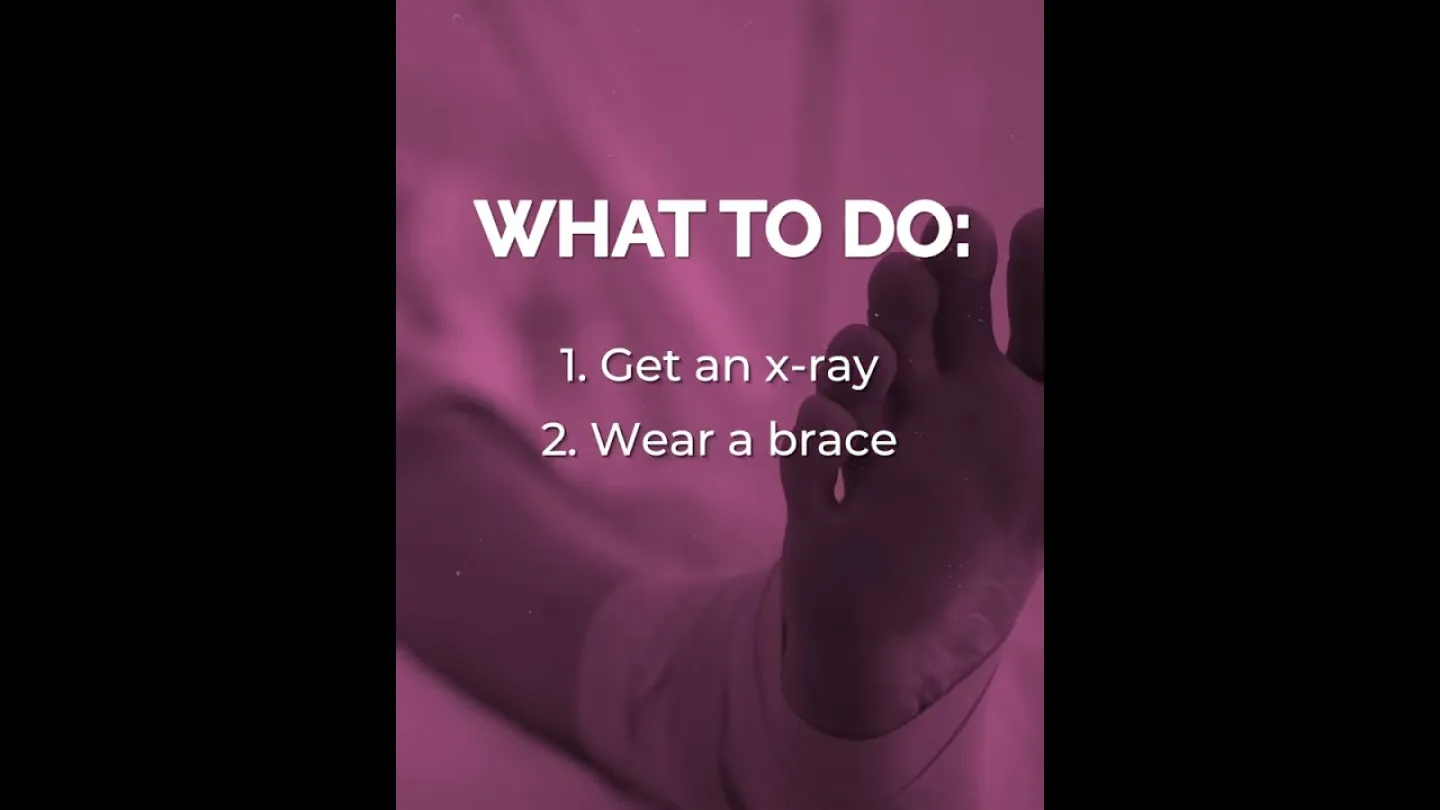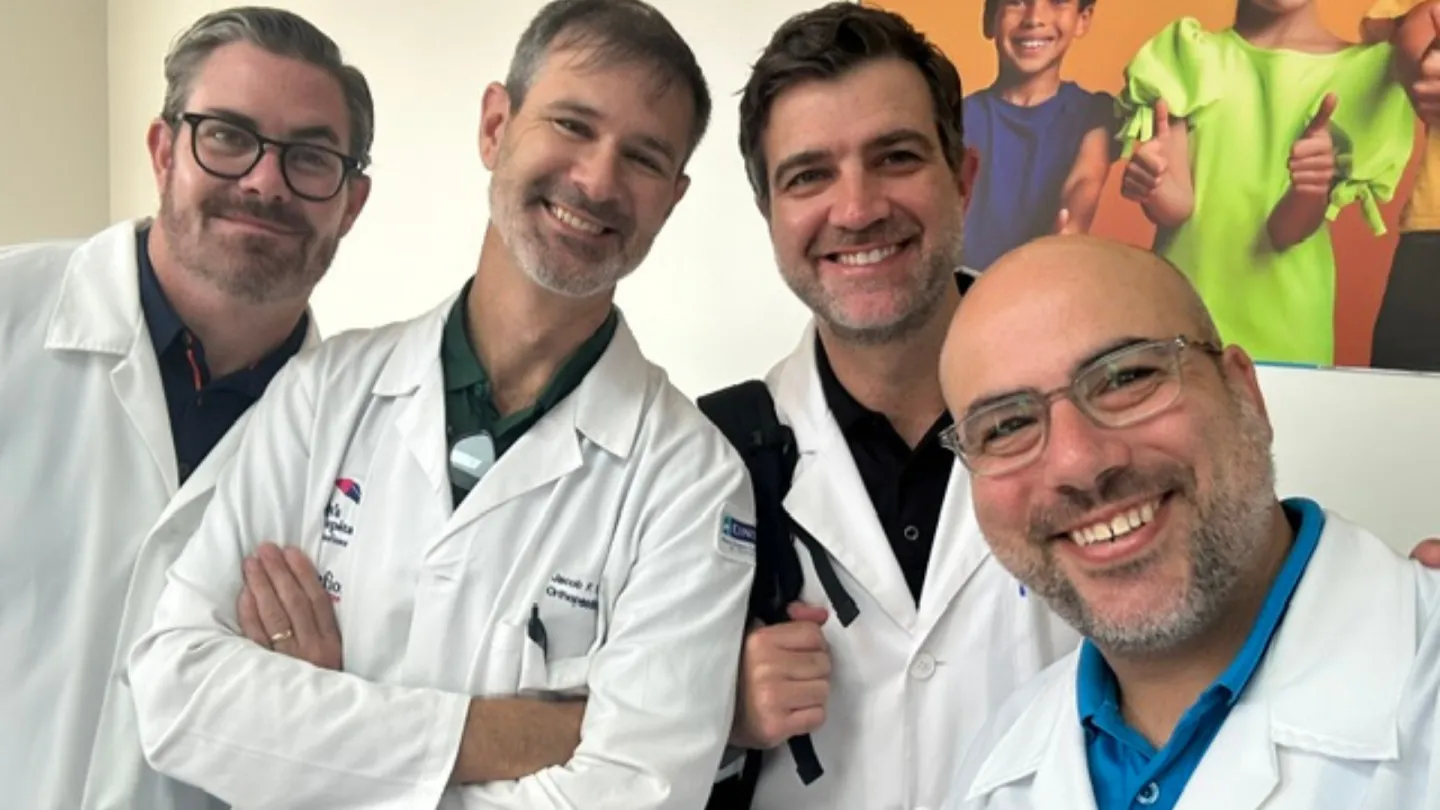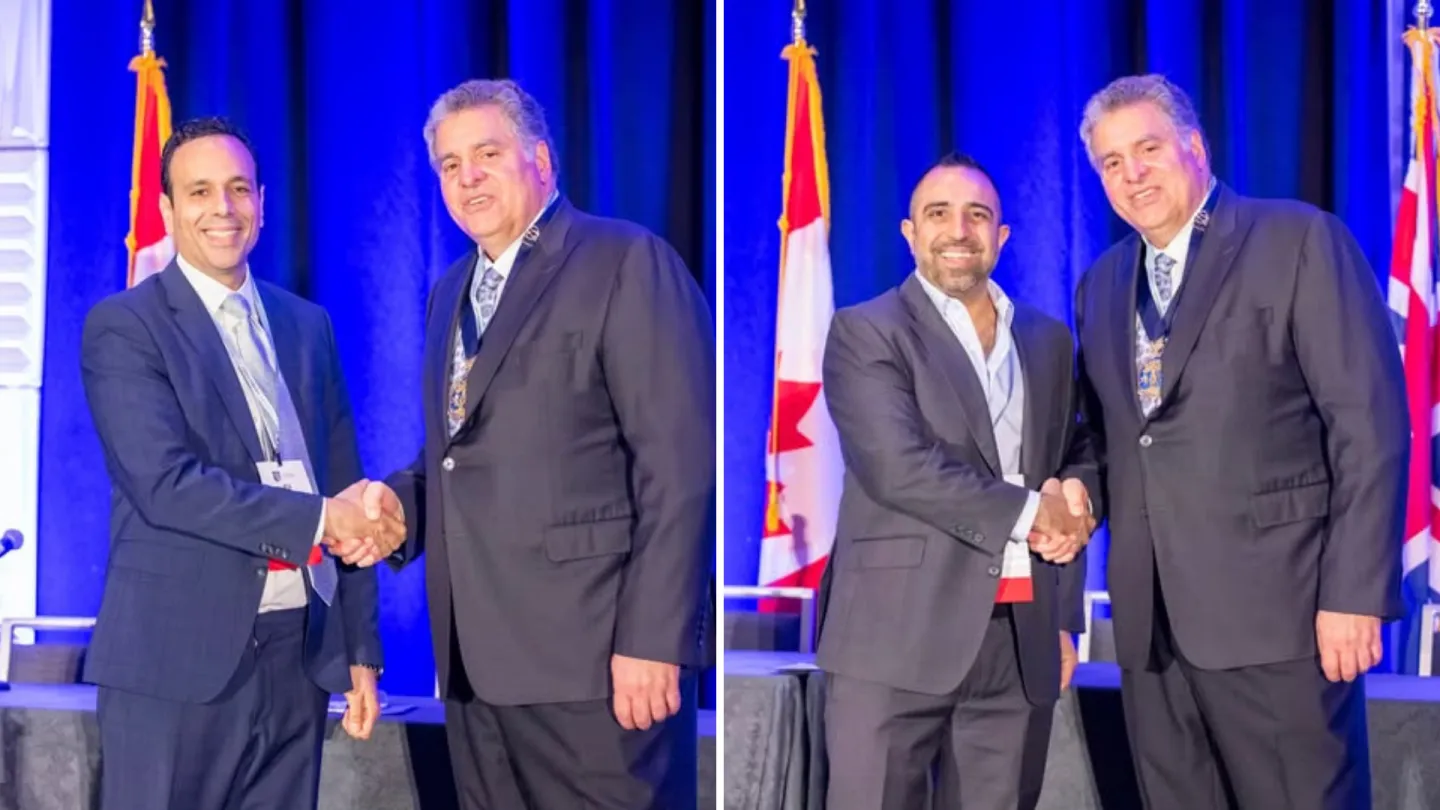Our Approach to Foot & Ankle Disorders

Montefiore Einstein Foot and Ankle Surgery offers extensive expertise in the diagnosis and management of a wide range of foot and ankle conditions. We are constantly striving to develop novel and leading-edge techniques for the advancement of care within our own health system and beyond. We’re ranked in the top 1% of all hospitals in the nation for Orthopedics according to U.S. News & World Report.
Though widely common, disorders of the foot and ankle represent some of the most disruptive musculoskeletal complaints. At Montefiore Einstein, we believe optimal outcomes are achieved through accurate diagnosis, appropriate and timely treatment, and intelligent patient-specific management.
The experience of our patients and their loved ones—not simply their ailments—demands our full attention. Your dedicated care team will be there to discuss your condition, answer questions, assess treatment options and develop a treatment strategy that is best for you.
Using a collaborative, multidisciplinary approach, we bring together podiatric, vascular and plastic surgeons with experts from nonoperative specialties, including physical and occupational therapy, rehabilitation, rheumatology, musculoskeletal radiology and pain management, to provide comprehensive and well-considered care.
Our status as an academic health system puts us at the forefront of our field. Together with our Albert Einstein College of Medicine, one of the highest NIH-funded institutions in the country, we are continually conducting research with the goal of discovering better treatment options for our patients. We routinely present our research findings and publish our study results in peer-reviewed publications.

Conditions We Treat
Montefiore Einstein treats a wide spectrum of orthopedic conditions, a selection of which you will find here. In addition to these, we have experience treating many other related conditions. Please contact us to schedule a consultation to review and discuss your specific healthcare needs.
Foot and ankle fractures
Arthritis of the ankle and midfoot
Conditions requiring total ankle replacement
Conditions requiring arthrodesis
Toe, foot and ankle problems
Toe, foot and ankle injuries
Chronic ankle pain/instability
Achilles tendon problems
Heel pain
Plantar fasciitis
Flatfoot
Spring ligament injury
Tarsal coalition
Tendon dysfunctions and injuries
Tendon injuries/Tendinopathy
High-arched foot
Diabetic foot conditions
Bunions
Arthritis of the big toe joint
Sesamoiditis
Morton’s neuroma
Hammer, claw and mallet toes
Osteonecrosis (Avascular Necrosis)
Lapidus arthrodesis
Dislocated toe joints
Broken toe
Ankle sprains
Osteoarthritis

Advanced Foot & Ankle Treatments
The majority of foot and ankle conditions can be treated with nonsurgical interventions like bracing, casting, injections, orthotics, or physical therapy. In some instances, surgery is the most effective solution. Our team offers patients a range of techniques designed to decrease pain, improve function, minimize surgical discomfort and shorten recovery time. A few of the most common procedures we offer are:
A ruptured Achilles tendon can be a severe and debilitating injury. It most commonly occurs in adults, often individuals in their middle age. The injury may happen while playing sports, but it can also occur with a significant misstep during everyday activities. Patients often experience a sudden pop in the back of their ankle and feel as though they were hit in this spot. Significant swelling occurs, and the patient loses the ability to forcefully push off on their toes.
Partial ruptures of the Achilles tendon can often be treated conservatively without surgery. Complete ruptures are commonly, though not always, treated with surgery. The benefits of surgical treatment include a decreased risk of re-rupture and shorter recovery time. Patient-specific considerations, such as a history of smoking, diabetes, desired activity level and age, are important in making the most appropriate treatment decision for each individual.
Surgical treatment involves a single, small incision on the back of the ankle at the site of the rupture, directly over the Achilles tendon. This incision may be particularly small if a percutaneous technique is utilized. The incision may be large if the patient has a previous Achilles tendon condition. The tendon ends are then sewn together.
After surgery, once the incisions are healed, ankle motion is encouraged as soon as possible. This helps decrease scarring and maximize strength and function. Weight bearing is allowed in a protected walking boot at approximately four weeks post-surgery. The patient can return to a regular shoe at 10 to 12 weeks. A wedge is often used in the shoe to help protect the Achilles tendon during recovery. Continued improvement and increased strength may be expected for up to a year.
Ankle fractures are an extremely common injury that may occur following both moderate injury (slipping on ice) or major trauma (falling from a height or a motor vehicle accident). Certain ankle fracture patterns maintain the overall stability of the ankle joint, while others are significantly unstable and require surgery to realign the bones and joint. Many of these injuries also cause substantial soft tissue damage and occasional injury to the cartilage lining the joint. If not treated appropriately from the outset, these additional injuries can have a tremendous impact on health outcomes.
Major problems following an ankle fracture include stiffness, chronic pain and arthritis of the ankle joint, particularly following inappropriate realignment of the bones and joint surface. Even a few millimeters of joint malalignment can lead to arthritis and subsequent disability. When surgery is necessary, rigid plates and screws are used to fix the inside and outside of the ankle joint and provide maximal stability to the bones and joint.
After surgery, the ankle is often immobilized in a splint until the incisions have healed. Early motion of the ankle is then encouraged to avoid stiffness. Patients generally must avoid all weight bearing for the first two weeks. At two to six weeks post-surgery, weight bearing is gradually allowed in a protected walking boot, and patients are eventually transitioned to a regular shoe. Activity is slowly increased over time. During recovery, physical therapy, low-impact strengthening and aquatic exercise are encouraged and initiated as soon as possible. Continued improvement may be seen for six to 12 months.
When arthritis affects the bones of the hindfoot (the section of the foot below the ankle that goes to the middle of the arch), patients may require a surgical procedure that removes the arthritic joint surfaces and fuses the bones together. By fusing these bones and creating one solid bone mass, stability can be improved, deformity can be corrected, and pain can be relieved.
A triple arthrodesis, or fusion of the hindfoot bones, may be a reasonable consideration in a number of instances, including severe dysfunction of the tendons, inflammatory arthritis, arthritis resulting from prior fractures of the hindfoot, and other conditions. Hindfoot arthritis must sometimes be addressed together with ankle arthritis; however, this is not always the case, and the ankle joint should be carefully assessed in a patient-specific manner.
The bones of the hindfoot work together to provide the side-to-side motion of the foot. After this procedure, side-to-side motion is limited, but up-and-down motion of the ankle and foot is preserved. Walking on flat, even surfaces can usually be performed without difficulty; however, walking on uneven surfaces, such as rocky trails or a beach, may be difficult.
Triple arthrodesis is generally performed by making incisions on the inside and outside of the ankle and foot, preparing the joint surfaces for fusion, and placing screws, plates, staples or other orthopedic devices to stabilize the bones while they heal.
After surgery, patients are in a cast for approximately six weeks, after which they can walk in a controlled ankle motion (CAM) walking boot for an additional six weeks. Patients can then usually return to wearing a regular shoe. Aggressive physical therapy is needed to strengthen the foot and ankle.
Hallux rigidus is arthritis that develops at the metatarsophalangeal (MTP) joint, which is the base of the big toe. Despite being a small joint, arthritis in this area can be very uncomfortable and may greatly impair activity tolerance, limit shoe choices, and impact quality of life. While there are some conservative options for mild hallux rigidus, more symptomatic patients may benefit from surgery.
Surgical options for hallux rigidus depend on the degree of arthritis within the joint. What’s known as a cheilectomy is usually recommended when damage is mild or moderate. Working through an incision at the top of the foot, the bone spurs and a portion of the foot bone are removed, giving the toe more room to bend.
The toe and operative site may remain swollen for several months after the operation, and a rigid, wooden-soled shoe must be worn for two weeks after surgery. Most patients experience long-term relief; however, the underlying arthritis in the joint is not removed, so some pain may persist and additional surgery might be needed in the future.
When damage to the cartilage is severe, arthrodesis is recommended. Working through an incision at the top of the foot, the damaged cartilage is removed. Pins, screws or a plate are then used to fuse the joint in a permanent position. This type of surgery means the toe can’t bend at all across this specific joint. Nonetheless, it is the most reliable method to reduce pain. During recovery, patients can walk immediately but are required to use a rigid, wooden-soled shoe for the first six weeks after surgery.
Indicated in very specific circumstances, arthroplasty is a surgical procedure in which the normal joint surface is removed and replaced. Interpositional arthroplasty, in which a soft tissue graft is placed between the damaged surfaces of the joints, works as a cushion for the big toe joint and is an alternative to metal implants. Appropriate for select individuals, this procedure may relieve pain and preserve joint motion.
Morton’s neuroma is one cause of metatarsalgia, which is pain in the ball of the foot due to inflammation of a nerve in the foot. This tumor-like inflammation is an enlargement of the nerve, not a malignancy, and is caused by entrapment of the nerve under the metatarsal heads while standing or walking. This most often occurs when wearing high heels and thin, hard-soled shoes, but it can also occur from any standing or walking situation. It usually occurs between the third and fourth toes.
The symptoms of Morton’s neuroma are pain and numbness in a specific spot in the ball of the foot, sometimes radiating into the toes. The pain, which may feel like a marble or stone under the foot, can be severe enough to prompt a patient to remove their shoe. Moving around can cause a sharp snap and pain. The examining physician can sometimes feel this small mass by squeezing and pressing on the foot. Testing with a pin may reveal some numbness.
Initial treatment includes shoe modification. A soft shoe with an extra wide toe box should be worn. A metatarsal pad can also help improve symptoms. A cortisone injection around the nerve may help reduce swelling and inflammation and may also help localize the problem.
If conservative treatment does not relieve symptoms, surgery may be considered. Surgery involves removing a small portion of the nerve, thus releasing the tissue and ligaments overlying the nerve. This outpatient procedure can be performed under local anesthetic and involves a recovery period of approximately two weeks. During this time, a rigid orthopedic shoe is worn. Transition to a regular shoe occurs as soon as swelling allows.
Since the nerve is removed, patients will experience numbness in the toes and ball of the foot, post-surgery. This is typically not a substantial problem and becomes less noticeable with time. Persisting pain may be due to irritation at the cut end of the nerve, which is termed a stump neuroma, and may require additional surgery. Scarring and contractures around the toes may also occur and require additional surgery.
Your Team of World-Renowned Specialists
With extensive experience within their subspecialties, our physicians and staff are always up to date on the latest treatments and techniques. Their in-depth knowledge and commitment to the field ensure the best possible patient care for even the most challenging conditions.
Chaiyaporn Kulsakdinun, MD
Yi Guo, MD
Andrew M. Somberg, MD
Michael Sivilli, PA
Featured Videos
Orthopedic Surgery Highlights
Physician Referrals
Montefiore Einstein embraces a collaborative approach.
If you have a patient who could benefit from our services, please reach out.
718-920-2060
Schedule a Visit
Have a general question or concern?
We’re available to help you by phone or email.
• 718-920-2060 • orthofeedback@montefiore.org

















